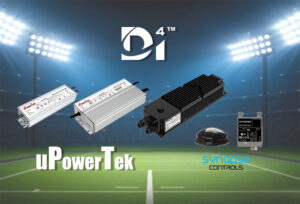Tunable spectrum grow lights offer a significant advantage over traditional grow lights by allowing you to adjust the light spectrum to optimize plant growth at different stages. Here are some key design considerations to keep in mind when choosing or developing a tunable spectrum grow light:
Light Spectrum Control:
- Wavelength Range: The light source should offer a broad spectrum encompassing wavelengths crucial for plant growth, typically ranging from 380nm (deep blue) to 780nm (far-red).
- Independent Control of Key Wavelengths: The ability to independently adjust the intensity of specific wavelengths like blue, red, and far-red allows for targeted control of plant development. This can influence aspects like vegetative growth, flowering, and stem thickness.
- Dimming and Spectrum Customization: Dimming capabilities and the ability to create custom light spectrums provide flexibility for different plant needs and growth stages.
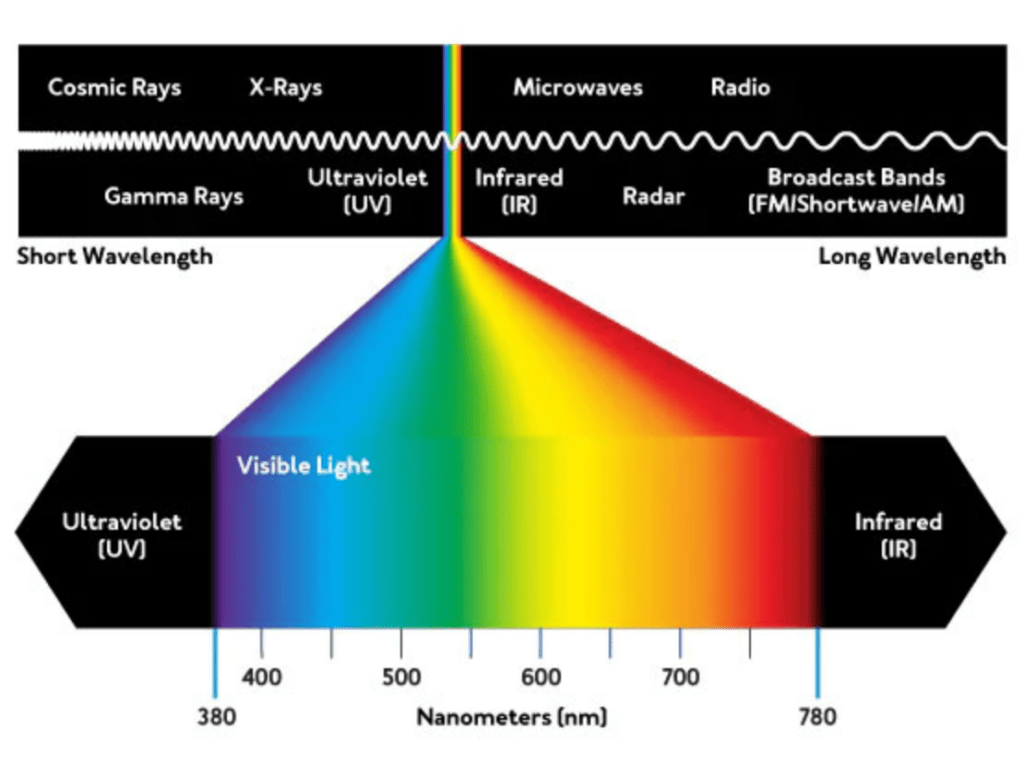
Light Source Technology:
- LED Efficiency: LEDs are the preferred choice for their high efficiency, long lifespan, and minimal heat generation. Look for LEDs with high Photosynthetic Photon Flux Efficacy (PPF) to maximize usable light for plants.
- Spectrum Tuning Mechanisms: There are various methods to achieve tunable spectrums, such as:
- Multiple LED types: Combining LEDs of different colors allows for adjustments in the overall spectrum.
- Phosphor conversion LEDs: White LEDs coated with phosphors convert some blue light to other colors, enabling spectrum adjustments.
- Dynamic spectral control systems: Advanced systems use filters or other mechanisms to dynamically adjust the spectrum reaching the plants.
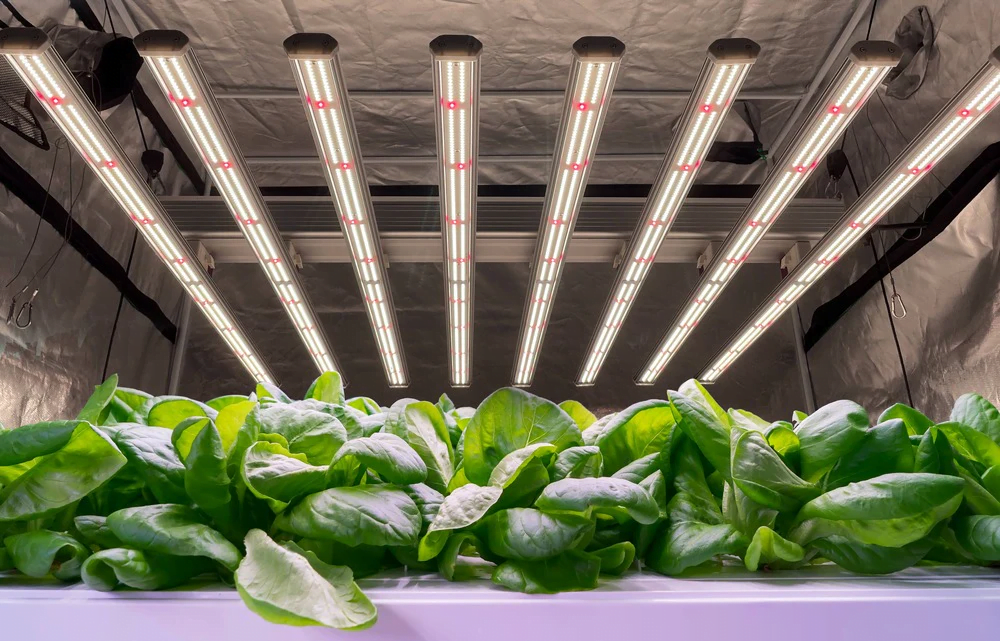
Light Delivery and Plant Coverage:
- Light Distribution: The grow light should provide uniform light distribution across the plant canopy to ensure all plants receive sufficient light for optimal growth. This can be achieved through appropriate lens design and fixture placement.
- Canopy Penetration: The light needs to penetrate the plant canopy effectively to reach lower leaves. Factors like light intensity, fixture height, and plant spacing all play a role.
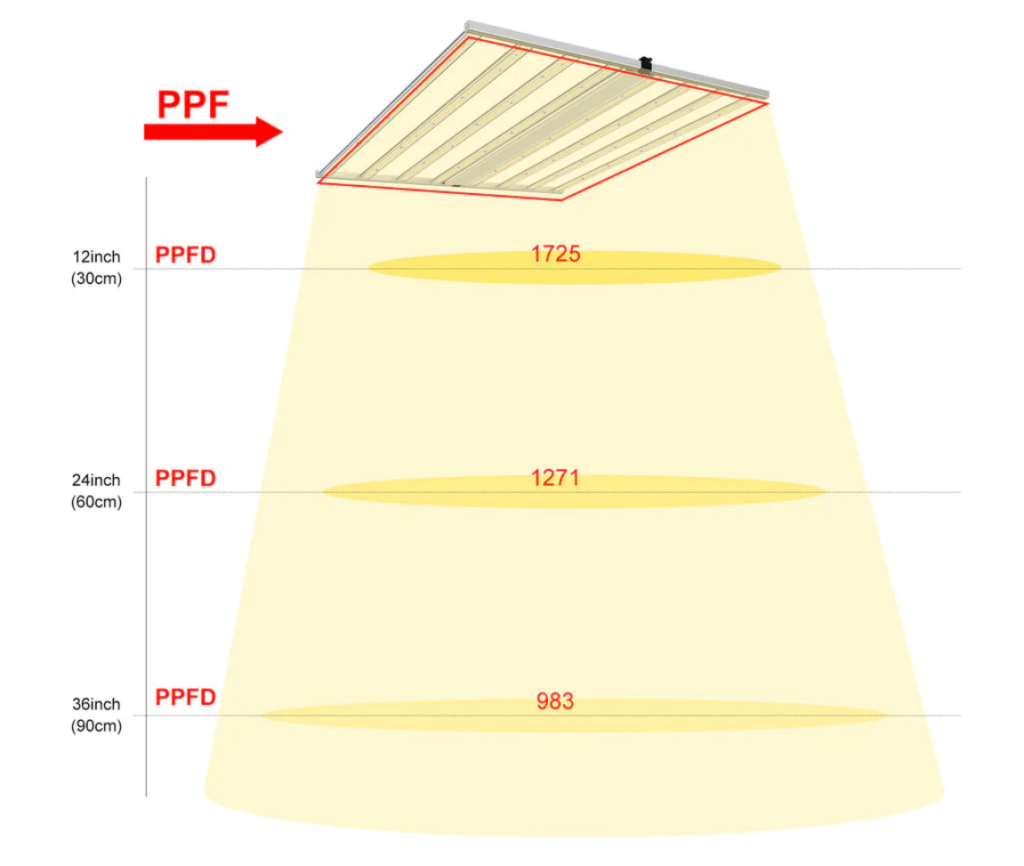
Control Systems and User Interface:
- Intuitive Control Panel: The system should have an easy-to-use interface for setting light intensity, spectrum profiles, and scheduling for different growth stages.
- Automation Capabilities: Advanced systems can offer automated control based on pre-programmed schedules or real-time sensor data (e.g., light level, temperature, humidity).
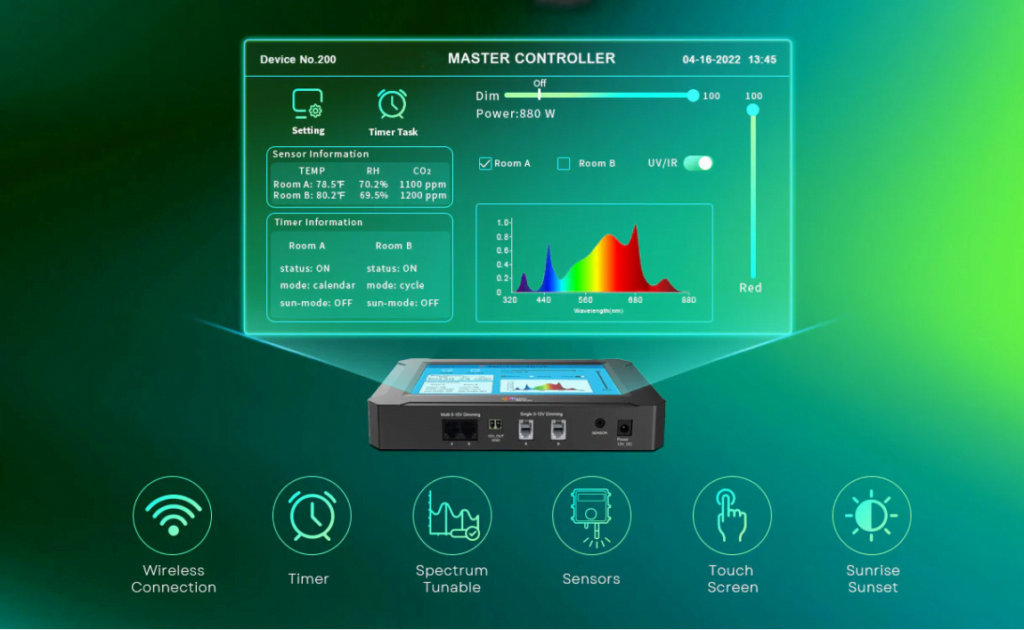
Durability and Reliability:
- Robust Build: The grow light should be durable to withstand the conditions of a growing environment, including humidity and occasional splashes of water. IP-rated housings can provide additional protection.
- Long Lifespan: Using high-quality components to ensure a long operational lifespan, reducing the need for frequent replacements.
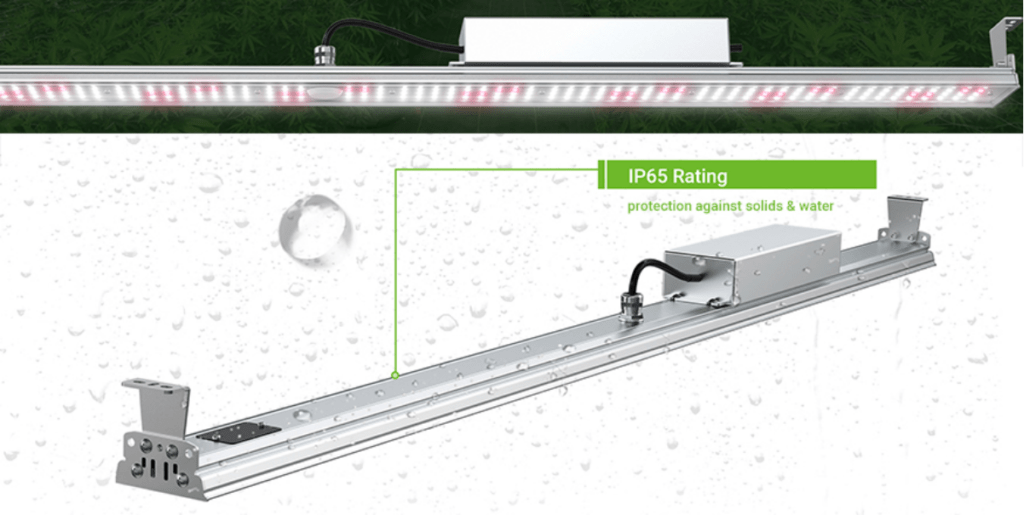
Cost-Effectiveness:
- Initial Cost vs. Operating Cost: Balancing the initial cost of the grow light system with the operating costs. Investing in high-efficiency, durable components can lead to lower long-term costs.
- Scalability: Designing the system to be scalable, allowing users to expand their lighting setup as needed without significant additional investment.
Additional Considerations:
- Heat Management: LEDs generate minimal heat, but proper heat dissipation design is still important to ensure optimal LED performance and prevent damage to plants.
- Durability and Reliability: Grow lights operate in potentially humid environments. Look for a well-built system with corrosion-resistant materials and proper waterproofing.
- Safety Compliance: Ensure the grow light meets electrical safety standards for your region.
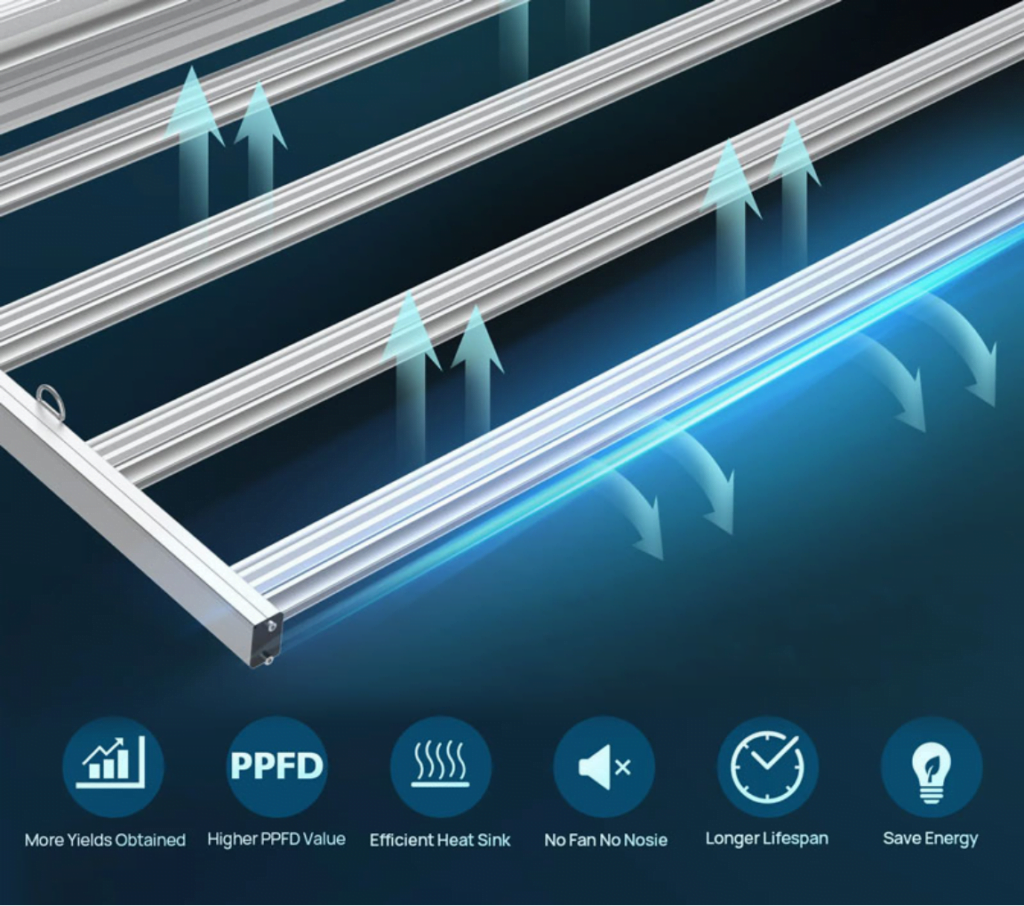
By carefully considering these design aspects, you can choose or develop a tunable spectrum grow light that effectively meets the specific needs of your plants and optimizes their growth and yield. The design of tunable spectrum grow lights should be optimized for spectrum range and flexibility, uniform light distribution, efficiency, durability and reliability, control options, user-friendliness, and cost. The successful integration of these key design considerations can result in a high-performing, cost-effective, and user-friendly solution for indoor gardening and horticulture. With uPowerTek full range multiple output LED drivers ranging from 300W to 1000W, grow light manufacturers are able to design the proper fixtures for next new generation.



